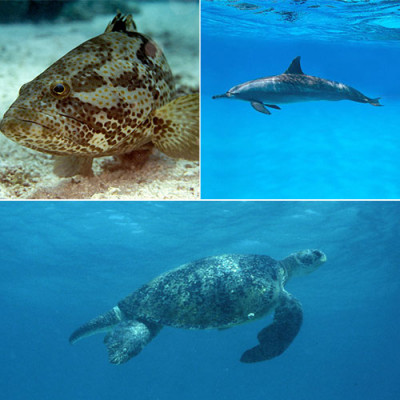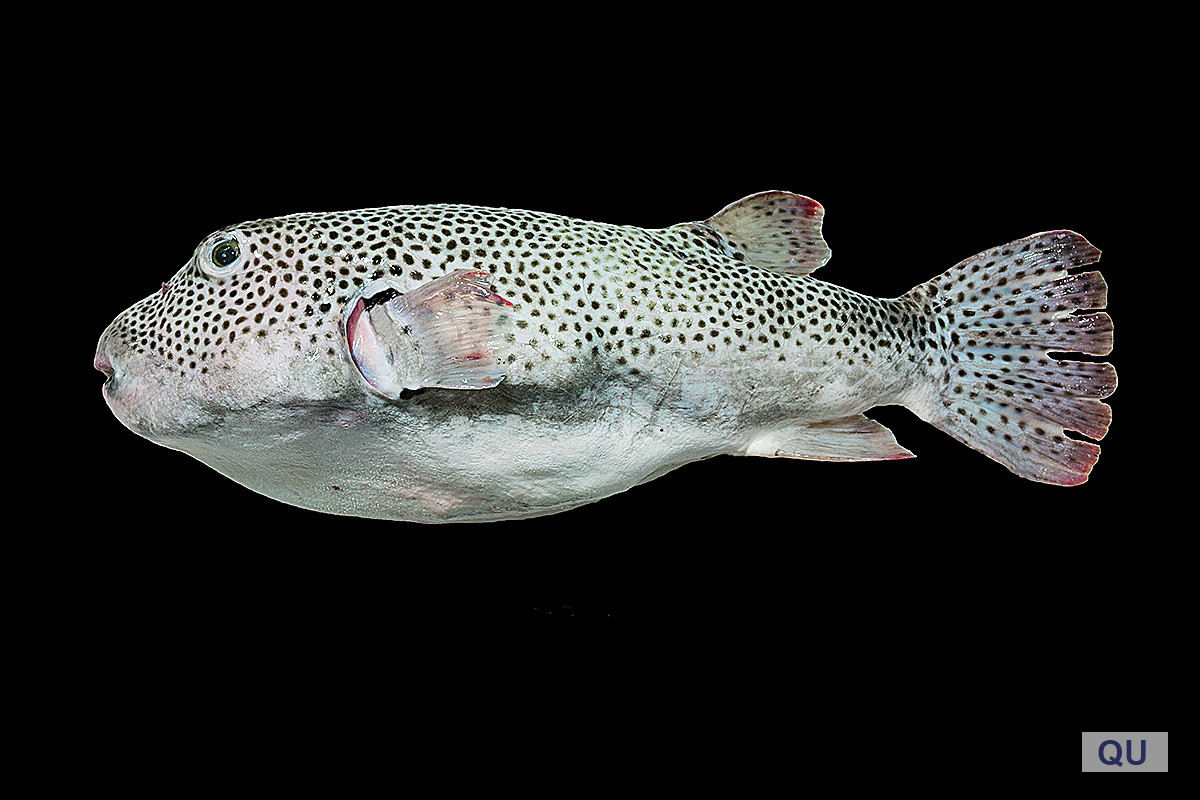Name: Stellate Puffer
Local name: Fogol
Scientific name: Arothron stellatus
Classification: Class: ray-finned fishes; Order: plectognaths; Family: puffers (Tetraodontidae)
Size: This large species reaches at least 90 cm in total length.
Habitat:
The Stellate Puffer inhabits coral areas and adjacent habitats. It is solitary and often seen resting on sandy bottoms. Juveniles are usually found on protected sand and seagrass bottoms. The pelagic larvae may disperse over great distances. Puffers are named for their ability to inflate themselves by drawing water into a ventral diverticulum of the stomach when provoked. This species contains a highly toxic poison called tetrodotoxin.
Distribution:
The species is widespread in the Indo-West Pacific, from the Red Sea and eastern Africa in the west, to the Marquesas Islands in the east, north to Japan and south to New Zealand.
Conservation status:
The IUCN Red List of Threatened Species classifies the Stellate Puffer as Least Concern (LC) in both the global assessment and the regional assessment for the Arabian Gulf. It is of no interest to fisheries and a minor component of the marine aquarium trade.
Description:
The body is oval, spherical and relatively elongated. The head is large and blunt, and the teeth are fused to beak-like dental plates. The skin is tough and without typical scales, but rather covered by small spines. Adults are white to pale grey with black spots on the head, body, and caudal fins, while juveniles are yellowish to orange, with curving rows of black spots dorsally, and curved black bands on the abdomen.








